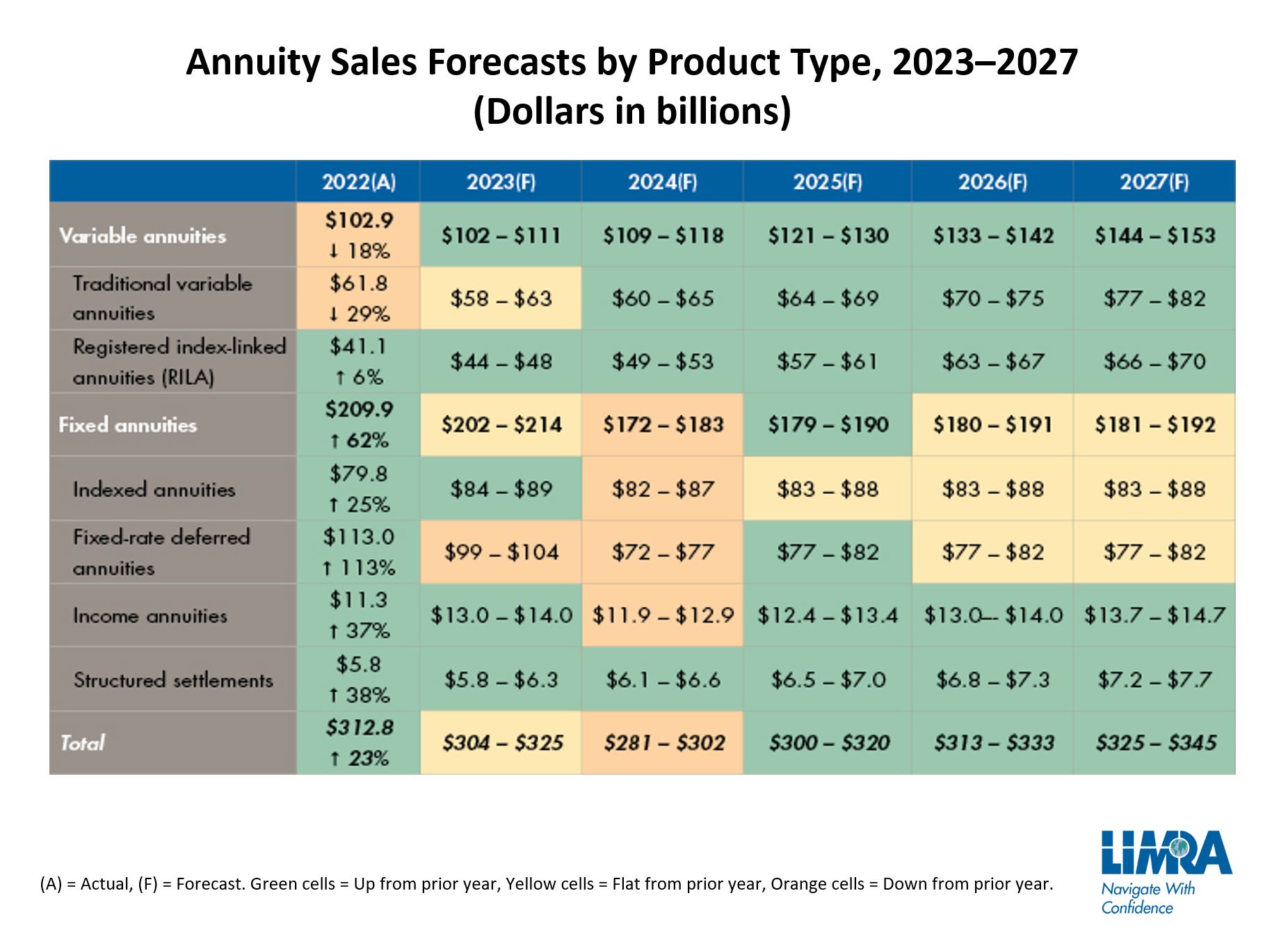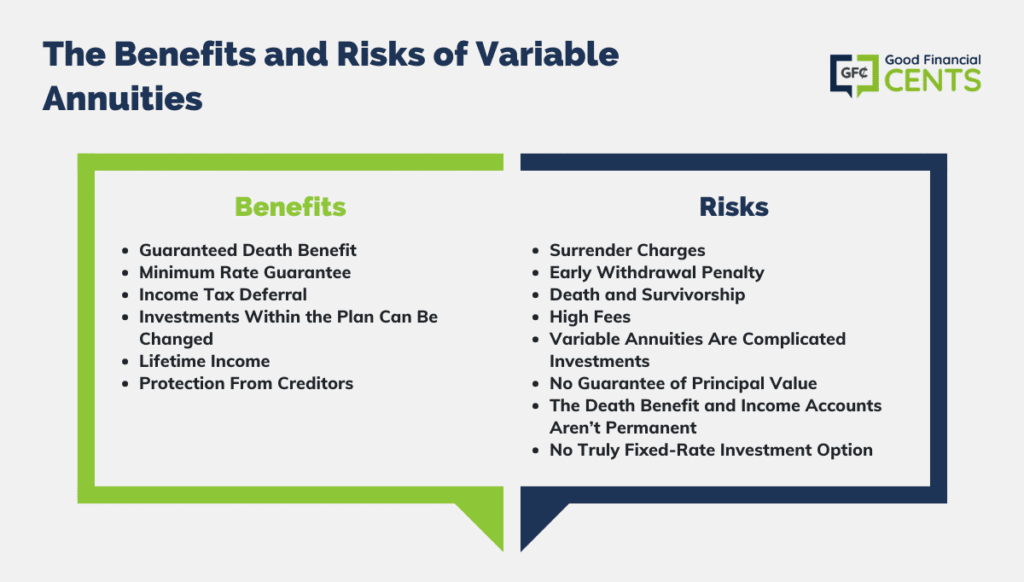All Categories
Featured
Table of Contents
Equally as with a fixed annuity, the owner of a variable annuity pays an insurance coverage business a round figure or collection of payments for the pledge of a collection of future repayments in return. But as discussed above, while a taken care of annuity expands at a guaranteed, continuous price, a variable annuity expands at a variable price that depends upon the efficiency of the underlying investments, called sub-accounts.

Throughout the buildup phase, possessions invested in variable annuity sub-accounts grow on a tax-deferred basis and are exhausted just when the contract owner withdraws those incomes from the account. After the buildup phase comes the revenue phase. Gradually, variable annuity properties must in theory boost in worth till the agreement owner determines she or he would like to begin withdrawing cash from the account.
The most significant issue that variable annuities typically present is high expense. Variable annuities have numerous layers of charges and expenditures that can, in accumulation, produce a drag of up to 3-4% of the agreement's worth each year.
Analyzing Strategic Retirement Planning Everything You Need to Know About Variable Vs Fixed Annuities Breaking Down the Basics of Choosing Between Fixed Annuity And Variable Annuity Features of Smart Investment Choices Why Choosing the Right Financial Strategy Matters for Retirement Planning Fixed Income Annuity Vs Variable Growth Annuity: Simplified Key Differences Between Fixed Index Annuity Vs Variable Annuity Understanding the Key Features of Variable Annuities Vs Fixed Annuities Who Should Consider Strategic Financial Planning? Tips for Choosing the Best Investment Strategy FAQs About Planning Your Financial Future Common Mistakes to Avoid When Choosing a Financial Strategy Financial Planning Simplified: Understanding Pros And Cons Of Fixed Annuity And Variable Annuity A Beginner’s Guide to Retirement Income Fixed Vs Variable Annuity A Closer Look at Fixed Annuity Vs Variable Annuity
M&E expenditure fees are determined as a percentage of the agreement value Annuity companies pass on recordkeeping and other management prices to the contract owner. This can be in the type of a flat yearly charge or a portion of the agreement value. Management costs may be included as part of the M&E threat charge or may be evaluated independently.
These costs can vary from 0.1% for passive funds to 1.5% or more for actively handled funds. Annuity contracts can be customized in a number of ways to offer the details needs of the agreement owner. Some common variable annuity bikers consist of guaranteed minimum accumulation advantage (GMAB), assured minimum withdrawal advantage (GMWB), and guaranteed minimal revenue benefit (GMIB).

Variable annuity contributions give no such tax obligation deduction. Variable annuities tend to be very inefficient automobiles for passing riches to the future generation due to the fact that they do not take pleasure in a cost-basis adjustment when the initial contract proprietor dies. When the owner of a taxable financial investment account dies, the expense bases of the financial investments kept in the account are adapted to mirror the market costs of those financial investments at the time of the owner's death.
Understanding Fixed Vs Variable Annuity Pros And Cons A Comprehensive Guide to Investment Choices What Is Annuities Fixed Vs Variable? Advantages and Disadvantages of Different Retirement Plans Why Fixed Vs Variable Annuities Is a Smart Choice Fixed Annuity Vs Variable Annuity: A Complete Overview Key Differences Between Different Financial Strategies Understanding the Rewards of Fixed Annuity Or Variable Annuity Who Should Consider Variable Annuities Vs Fixed Annuities? Tips for Choosing the Best Investment Strategy FAQs About Planning Your Financial Future Common Mistakes to Avoid When Planning Your Retirement Financial Planning Simplified: Understanding Fixed Annuity Or Variable Annuity A Beginner’s Guide to Smart Investment Decisions A Closer Look at Variable Vs Fixed Annuity
Therefore, heirs can acquire a taxable financial investment profile with a "fresh start" from a tax obligation viewpoint. Such is not the situation with variable annuities. Investments held within a variable annuity do not receive a cost-basis modification when the initial owner of the annuity passes away. This means that any kind of gathered unrealized gains will be handed down to the annuity proprietor's beneficiaries, in addition to the linked tax worry.
One substantial concern related to variable annuities is the capacity for disputes of passion that might exist on the component of annuity salespeople. Unlike an economic advisor, who has a fiduciary task to make financial investment decisions that profit the client, an insurance policy broker has no such fiduciary responsibility. Annuity sales are extremely financially rewarding for the insurance experts who offer them since of high upfront sales compensations.

Many variable annuity agreements include language which positions a cap on the percent of gain that can be experienced by specific sub-accounts. These caps stop the annuity owner from completely taking part in a part of gains that can otherwise be appreciated in years in which markets create significant returns. From an outsider's point of view, it would certainly appear that investors are trading a cap on investment returns for the aforementioned ensured flooring on financial investment returns.
As noted over, surrender costs can severely limit an annuity proprietor's capacity to relocate possessions out of an annuity in the very early years of the contract. Even more, while most variable annuities permit agreement owners to withdraw a defined quantity during the accumulation phase, withdrawals yet quantity usually lead to a company-imposed fee.
Withdrawals made from a set interest rate financial investment alternative could additionally experience a "market value change" or MVA. An MVA readjusts the value of the withdrawal to mirror any type of changes in rates of interest from the moment that the cash was invested in the fixed-rate option to the moment that it was taken out.
:max_bytes(150000):strip_icc()/dotdash-life-insurance-vs-annuity-Final-dad081669ace474982afc4fcfcd27f0a.jpg)
On a regular basis, even the salespeople that sell them do not totally comprehend how they function, and so salespeople in some cases victimize a purchaser's feelings to market variable annuities as opposed to the benefits and viability of the items themselves. Our team believe that capitalists need to totally comprehend what they own and just how much they are paying to own it.
Exploring the Basics of Retirement Options Everything You Need to Know About Annuities Variable Vs Fixed Defining What Is A Variable Annuity Vs A Fixed Annuity Benefits of Deferred Annuity Vs Variable Annuity Why Choosing the Right Financial Strategy Is a Smart Choice How to Compare Different Investment Plans: A Complete Overview Key Differences Between Different Financial Strategies Understanding the Rewards of Fixed Vs Variable Annuity Who Should Consider Fixed Vs Variable Annuity? Tips for Choosing Fixed Vs Variable Annuity FAQs About Planning Your Financial Future Common Mistakes to Avoid When Choosing a Financial Strategy Financial Planning Simplified: Understanding Your Options A Beginner’s Guide to Smart Investment Decisions A Closer Look at Indexed Annuity Vs Fixed Annuity
The exact same can not be said for variable annuity possessions held in fixed-rate investments. These possessions legitimately belong to the insurance provider and would for that reason go to risk if the company were to stop working. Similarly, any type of assurances that the insurance provider has concurred to provide, such as a guaranteed minimum revenue benefit, would be in inquiry in the event of an organization failure.
Prospective purchasers of variable annuities need to comprehend and think about the economic problem of the releasing insurance company prior to entering into an annuity agreement. While the advantages and drawbacks of numerous types of annuities can be debated, the genuine issue surrounding annuities is that of viability. Simply put, the question is: who should own a variable annuity? This concern can be hard to respond to, offered the myriad variants available in the variable annuity cosmos, however there are some basic standards that can help financiers determine whether annuities need to play a duty in their financial strategies.
Besides, as the saying goes: "Caveat emptor!" This short article is prepared by Pekin Hardy Strauss, Inc. Fixed annuity benefits. ("Pekin Hardy," dba Pekin Hardy Strauss Riches Monitoring) for informative purposes just and is not meant as a deal or solicitation for organization. The information and data in this short article does not make up lawful, tax obligation, audit, investment, or other specialist guidance
Table of Contents
Latest Posts
Exploring the Basics of Retirement Options A Closer Look at Retirement Income Fixed Vs Variable Annuity What Is the Best Retirement Option? Features of Smart Investment Choices Why Choosing the Right
Highlighting Deferred Annuity Vs Variable Annuity Everything You Need to Know About Financial Strategies What Is the Best Retirement Option? Pros and Cons of Various Financial Options Why Deferred Ann
Decoding Fixed Vs Variable Annuities Key Insights on Your Financial Future What Is Fixed Indexed Annuity Vs Market-variable Annuity? Advantages and Disadvantages of Different Retirement Plans Why Reti
More
Latest Posts